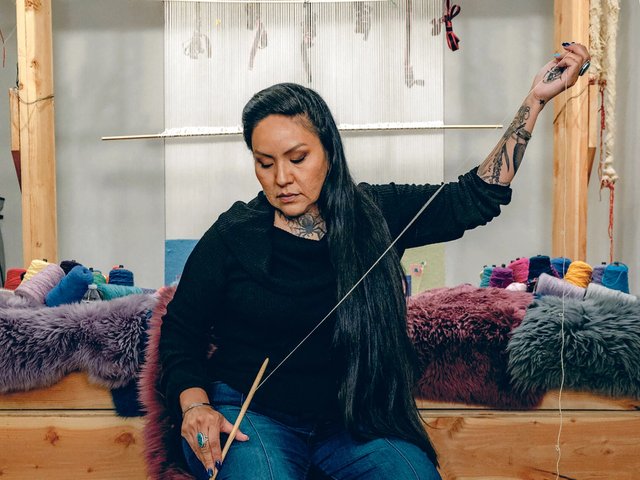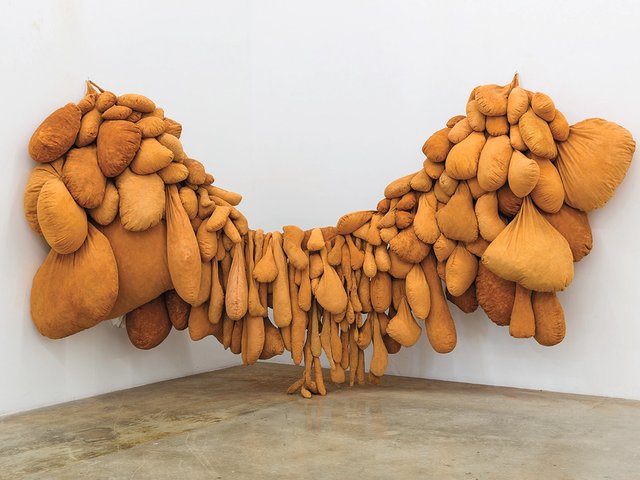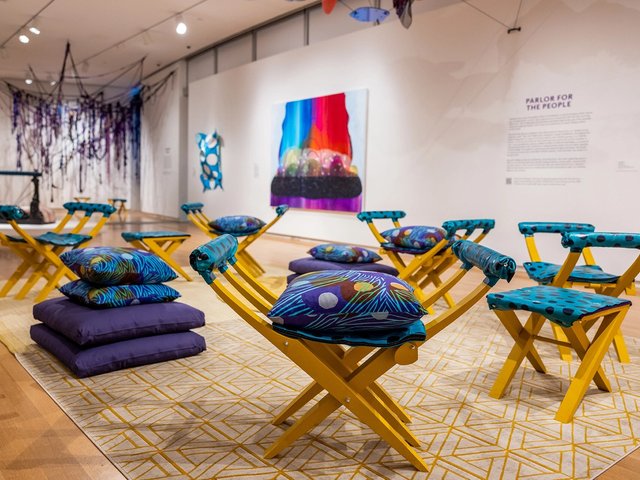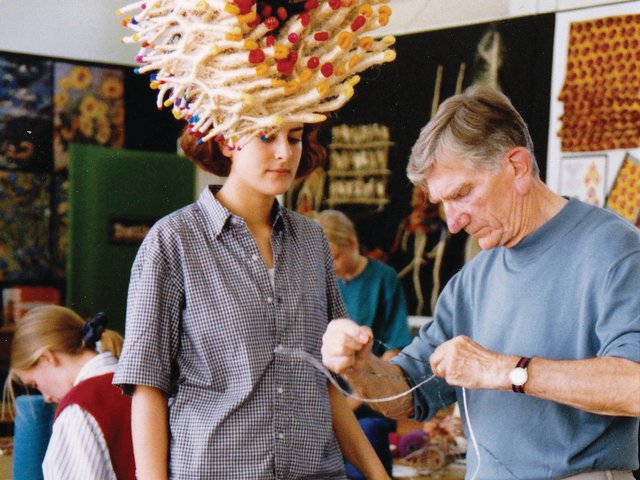The travelling exhibition Woven Histories: Textiles and Modern Abstraction is making its final stop at the Museum of Modern Art (MoMA). The expansive show explores weaving through the lens of abstraction. Around 150 works of various mediums investigate shared histories and contextualise weaving as holding a special resonance within the context of abstraction.
Lynne Cooke—the senior curator of modern and contemporary art at the National Gallery of Art in Washington, DC—organised the exhibition in collaboration with MoMA, the Los Angeles County Museum of Art (where the show first opened in September 2023) and the National Gallery of Canada in Ottawa.
Cooke says that, in recent years, she has noticed a “surge” in weaving in the practices of both mid-career and emerging artists. “I was interested in why it was weaving rather than sewing or the domestic crafts,” she tells The Art Newspaper. “The skill sets in weaving are very complex to learn and do. I was struck by the number of artists who were using the orthogonal grid to make patterns, which come from a structural interlace and tend to be a geometric abstraction.”
She adds: “The more I looked into it, the more I realised that it’s there from the beginning—in the histories of abstraction and canonical histories that come from things like metaphysics, or Mondrian or Malevich, or the process of distillation and reduction of forms. There’s the same abstraction in textile-making.”
Each iteration of the exhibition has been different because of variances in gallery space and audience—which “impacts how shows are received and presented”, Cooke says—as well as conservation needs, since many textile works cannot be moved or displayed for long periods of time.
At MoMA, where Woven Histories was organised in collaboration with the curator Esther Adler, it responds in particular to the museum’s historical engagement with the Bauhaus. The show features a selection of works by Anni Albers, including her Free-Hanging Room Divider (around 1949)—a suspended grid woven from cellophane and horsehair that evokes Peruvian weaving and dates to the artist’s first solo exhibition at MoMA in the same year it was made.
Another work unique to MoMA’s iteration is Wall Hanging (1924) by Gunta Stölzl, a Bauhaus professor who developed the weaving workshop at the school. The piece amalgamates a series of horizontal bands made from materials like wool and metal thread that illustrate the various methods of weaving and its limitations and possibilities.
The exhibition also includes several artists who may be less familiar to audiences, like the late Ed Rossbach (1914-2002). Rossbach was trained in weaving and ceramics but never pursued gallery representation in his lifetime. An influential artist and textile historian, he wrote several books arguing for basketry to be considered a form of fine art rather than craft.
“Basketry precedes looms and is found in every culture since early human history,” Cooke says. “It’s interesting to see its renaissance in contemporary art beginning in the 1960s—and now in a more globalised art world, where artists are drawing on their cultural traditions. You can see it in the work of several artists we think of as contemporary artists, not as craftspeople, such as Jeffrey Gibson.”
Cooke adds that the exhibition prompts questions around broader humanitarian and environmental matters. “Textiles are not just about aesthetics or social coding,” she says. “Outsourcing and offshore textile-making involve oppressive and exploitative labour conditions and environmental damage. A number of artists address those questions, not just through textiles but through other mediums that get at these important issues.”
Several artists included in the show currently have solo exhibitions in New York that relate to and expand on their works at MoMA—including Teresa Lanceta at Sikkema Malloy Jenkins (until 17 May), Ellen Lesperance at Derek Eller Gallery (until 24 May) and Igshaan Adams at Casey Kaplan (until 25 July).
- Woven Histories: Textiles and Modern Abstraction, Museum of Modern Art, until 13 September






